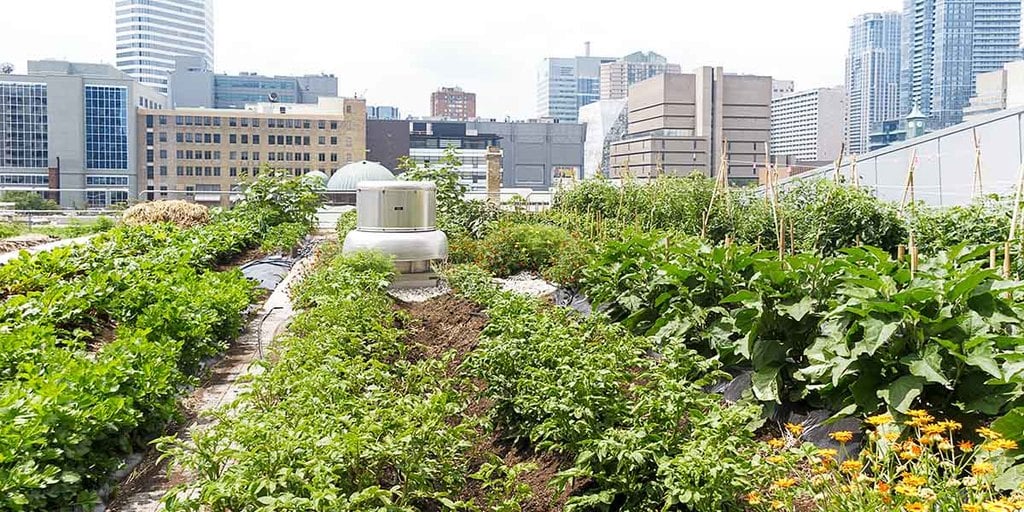City Blooming - The Facts
City Blooming - The Facts
Blog Article
Examine This Report on City Blooming
Table of ContentsSome Known Questions About City Blooming.City Blooming - The FactsAll About City BloomingWhat Does City Blooming Do?The Only Guide to City Blooming
Interested in expanding food offer for sale in the City of Chicago? Considering beginning a community garden? Modifications to the Chicago Zoning Ordinance allow farming usages like neighborhood gardens and urban farms in several parts of the city. Below is a checklist of often asked concerns regarding the rules and regulations that farmers must take into consideration when preparing an urban farming job.
The zoning change does not customize any various other codes handling composting, structure permits, purchasing or renting City possessed building, company licenses or ecological contamination. There are existing codes that control these concerns and they remain completely impact and might be suitable to your project. Neighborhood yards are normally had or taken care of by public entities, public companies or community-based companies and maintained by volunteers.
Urban farms expand food that is planned to be marketed, either on a nonprofit or for-profit basis. Due to their commercial purpose, urban farms require an organization license.
City Blooming Fundamentals Explained
The quantity of compost material can not surpass 25 cubic backyards at any type of offered time according to the standards in 7-28-715 of the City's Municipal Code. Because the soil at the majority of brand-new garden sites requires modifying, compost, soil, timber chips, or other products can be acquired to build or improve the growing room.

If a building permit is called for then the hoophouse will certainly be thought about an accessory building. You can locate out more about the building license requirements by speaking to the Division of Structures. The 25,000-square-foot size restriction is intended to avoid a solitary area garden from controling a provided block or interfering with the block's existing residential or commercial personality.
The limitation does not use to yards found in Public Open Area (POS) areas. Can there be even more than one neighborhood yard that is 25,000 square feet on a single block? Fencing is not needed, nevertheless, gardens that have huge car parking locations may be required to mount fence or various other landscape design features.
The Basic Principles Of City Blooming
B1 & B2 areas call for that all industrial usage activities be conducted indoors. Is fencing needed for urban ranches? Fences may be needed, along with landscaping and testing, for certain vehicle parking locations and outdoor job or storage space locations depending on place and the particular task taking place.
Urban farms require structure licenses and zoning approvals prior to construction (home and garden). Various other kinds of city evaluation might be required depending on specific structures, activities, dimension, landscaping, licensing, public heath and stormwater monitoring concerns.
The Department of Organization Affairs and Consumer Defense can assist determine the specific type of organization permit that's called for. Off road parking is needed for most commercial tasks in Chicago. The called for number of vehicle parking rooms is based on the number of employees functioning on site and not the square video footage of the expanding area.
City Blooming - The Facts

An urban ranch can market garden compost material generated on site, nonetheless, the procedure should conform with the laws in 7-28-715 of the Chicago Municipal Code. Aquaponic systems are permitted inside on city farms in several zoning areas.
As much as 5 hives or swarms of honey may be maintained as an accessory usage. Nonetheless, beekeepers have to sign up with the Illinois Division of Agriculture. To learn more about the suggested zoning amendment you may call the Department of Real Estate and Economic Development, Bureau of Preparation and Zoning at 312.744.8563.
Farming in cities and metropolitan areas A metropolitan farm in Chicago. Urban farming describes numerous methods of cultivating. https://www.behance.net/danielnold, handling, and distributing food in city locations. The term additionally applies to the area activities of pet husbandry, aquaculture, beekeeping, and gardening in a metropolitan context. Urban farming is distinguished from peri-urban agriculture, which occurs in rural areas at the side of residential areas.
10 Simple Techniques For City Blooming
, who seek to form social networks started on a shared ethos of nature and neighborhood holism. These click resources networks can create by means of formal institutional assistance, ending up being integrated right into neighborhood town planning as a "transition town" motion for sustainable metropolitan development.
The much more direct accessibility to fresh veggie, fruit, and meat products that may be understood through metropolitan agriculture can enhance food protection and food safety while lowering food miles, causing reduced greenhouse gas discharges, consequently adding to environment adjustment reduction. Several of the initial evidence of metropolitan agriculture comes from Mesopotamia.
Report this page